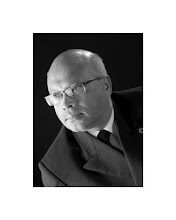ART MOVEMENTS
Abstract art
Art which is either completely non-representational, or which converts forms observed in reality into patterns which are read / interpreted by the spectator.
Abstract expressionism
Abstract style originating in the U.S. in the 1940s emphasizing spontaneity and energy.
Art deco
Style in decoration and architecture originating in the 1920s characterized by streamlined, rhythmic patterns.
Baroque art
Term coined by the 19th century art historians for the prevailing style in Western European art c. 1580 - early18th c.
Biedermeier
Art term used to describe the Central European decorative arts of the period 1820-40.
Constructivism
An abstract art movement which manifested itself in Russia shortly before the Revolituon.
Cubism
Style inaugurated by Picasso and Braque in the early 20th century featuring fragmentation and rearrangement of natural forms.
Dadaism
Movement originating during and after World War I emphasizing the incongruous and accidental and mocking established traditions in art.
Expressionism
Style developed in Germany in the 1920s stressing the artist's emotional response to the subject, frequently using strong colors and distorted form.
Fauvinism (Fr. Fauve = "Wild beast"; pron. FOHV-ism)
An early 20th century French style employing thick outlines and bold, often clashing, colors unrelated to the colors of its subject in nature.
Gothic art
Medieval art from the ned of the Romanesque period (mid 12th c.) to the beginning of the Renaissance (early 15th c.).
Impressionism
French 19th c. art movement whereby artists tryed to catch a particular fleeting impression of color and light rather than making a synthesis in a studio.
Minimalism
Style emerging in the mid-20th century in which the elements are the simplest possible forms.
Naive art
The work of 20th century painters with a European cultural background who have not received a professional training.
Narrative painting
Painting whose chief intention is to tell a story.
Old Master
A painting of high quality produced before 1800 (formerly used for paintings earlier than 1700).
Op art
Name coined in 1947 for a style popular in the 1970s employing optical illusions by juxtapointing color and line in geometric patterns that seem to vibrate.
Pointillism
Late 19-century French style using small dots of pure color to compose images.
Pop art
American style of the 1960s employing imagery from popular and commercial culture to satirize or give emblematic value to familiar objects.
Rococo
A lighter and more playful version of the Baroque, associated with the reign of Louis XV of France.
Super Realism
Same as Photo and Hyper Realism. Exact copying of a photo or object. Often associated with the US on the 1970s.
Surrealism
Style using imagery from dreams and the subconscious, often distorting forms of ordinary objects or placing them in new contexts.
Transitional art
Work produced by modern African artists re-using discarded European materials.
Trompe l'oeil (Fr. "Fool the eye"; pron. tromLOY)
Style in painting so naturalistic that the eye is deceived into seeing flat surface as three-dimensional.
Nigel Thomas
Art Enthusiast
The object of art is to give life a shape
William Shakespeare
Art's present and possible future • Art as an investment • Who sells what, where and how • The history of art collecting
Dec 7, 2009
Art Movements
Posted by
Finearts
at
6:24 AM
![]()
![]()

